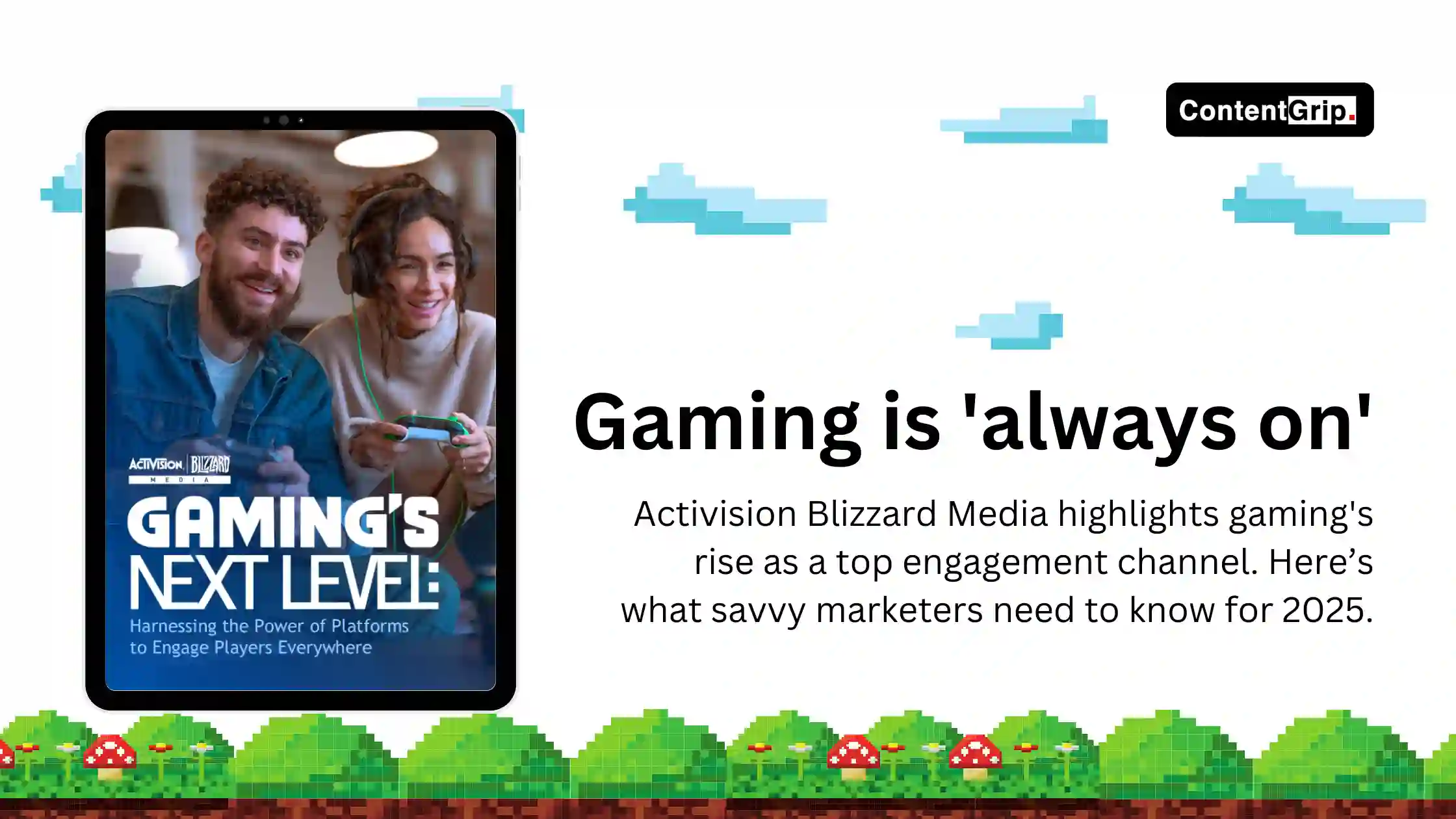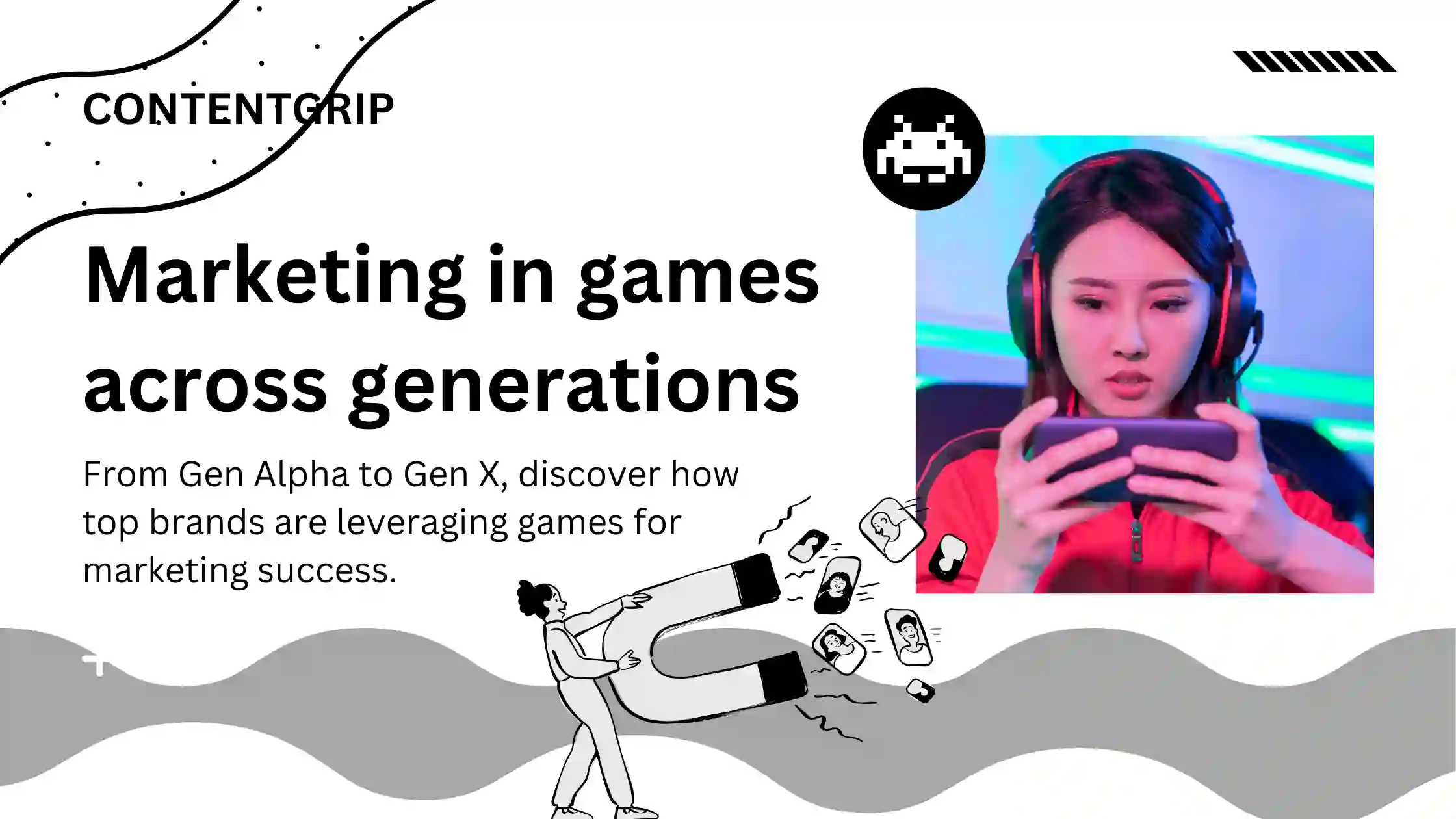Activision Blizzard says gaming is 'always on': what this means for brand engagement
New research shows gaming spans mobile, console, and PC daily—here’s how marketers can tap into this growing media channel.

Gaming is no longer just a pastime—it’s the new media frontier. With billions of players worldwide, gaming now commands more active attention than social media or streaming.
A new report from Activision Blizzard Media, Gaming’s Next Level: The Power of Platforms, highlights just how deeply gaming is embedded into daily life, offering brands unparalleled opportunities for scalable, meaningful engagement.
This article explores the key takeaways from the report and why marketers who still treat gaming as a niche opportunity are missing out.
Spoiler: Gaming isn't competing with other media—it's complementing it, and the brands that recognize this shift will be the ones to win.
Short on time?
Here’s a table of contents for quick access:
- Gaming is an "always-on" opportunity for brands
- Players move fluidly across platforms all day
- Why mobile, console, and PC each offer unique marketing angles
- How brands can engage without interrupting the player experience

Gaming is an "always-on" opportunity for brands
According to Activision Blizzard Media, 3.4 billion people globally are active players. In the US, a staggering 86% of the population plays video games, spanning Gen Alpha to Baby Boomers. And crucially, 70% of gamers engage with games daily, turning gaming into one of the most habitual and consistent digital activities.
Unlike fleeting social media scrolls or passive TV watching, gaming offers moments of focused, active engagement.
For marketers, this means more chances to connect with consumers when they’re truly paying attention—not just half-watching.
Players move fluidly across platforms all day
Gone are the days of gamers sticking to a single device. The report shows that 73% of weekly gamers play across two or more platforms, choosing mobile for quick breaks, console for immersive evenings, and PC for strategic play sessions.
This fluid movement across devices creates multiple touchpoints throughout the day:
- Morning: Quick mobile sessions while commuting.
- Afternoon: Mobile or PC gameplay during breaks.
- Evening: Longer, immersive sessions on console or PC.
Understanding these daypart behaviors allows brands to tailor messaging to player moods and needs at different times.
Why mobile, console, and PC each offer unique marketing angles
Activision Blizzard Media breaks down distinct engagement patterns per platform:
1. Mobile: The high-frequency, snackable option.
Best for rewarded videos and interactive playables that deliver value during quick sessions.
2. Console: Evening immersion.
Perfect for cinematic brand storytelling and premium sponsorships on the big screen.
3. PC: The strategic, high-investment player base.
Ideal for high-value display and video ads, particularly for brands targeting higher-income audiences.
Recognizing these nuances can mean the difference between a forgettable campaign and a resonant, platform-native brand experience.
How brands can engage without interrupting the player experience
Gaming ads work best when they add value, not when they disrupt. The report notes that 51% of players prefer shorter ads, 54% favor opt-in formats, and 47% want non-disruptive placements.
Brands that lean into rewarded videos, contextually relevant in-game placements, and interactive experiences are more likely to build trust—and drive conversions—than those forcing traditional ad formats into gaming environments.
The takeaway? Gaming offers a high-attention environment, but only for advertisers who respect the player's journey.
Final thoughts
Gaming is not a niche anymore—it's a primary media channel that demands a thoughtful, platform-sensitive marketing approach.
As players transition seamlessly between devices all day, brands that align messaging with platform behaviors and respect gaming’s immersive nature will earn more meaningful engagement.
The future isn’t about squeezing ads into games. It's about meeting players where they are, with experiences that feel like part of the fun.




